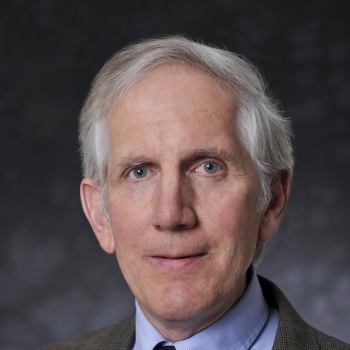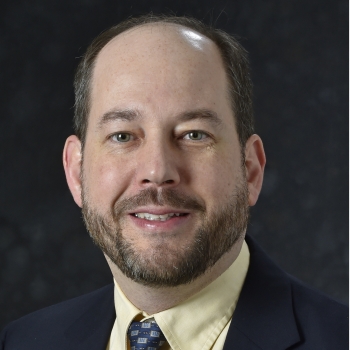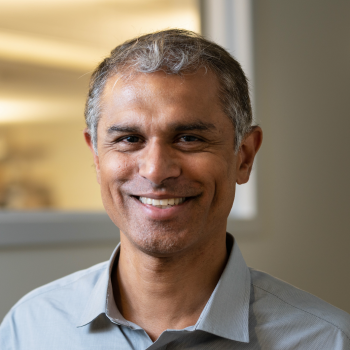Three from MIT are named 2020 Fellows of the IEEE
Among the newly selected 2020 class of Fellows of the Institute of Electrical and Electronics Engineers (IEEE) are Richard Lippmann and Daniel Rabideau, members of the technical staff at Lincoln Laboratory, and Hari Balakrishnan, the Fujitsu Chair Professor in the MIT Department of Electrical Engineering and Computer Science. The IEEE, the world's largest technical professional organization, confers the rank of Fellow on senior members whose work has advanced innovation in their respective fields and has furthered the IEEE mission to foster the development of technology to benefit society.
Richard Lippmann
During his 37-year career at Lincoln Laboratory, Lippmann has been responsible for groundbreaking work in two emerging fields: neural networks and cybersecurity. His research on neural networks resulted in the publication of the seminal paper "An Introduction to Computing with Neural Nets." This 1987 paper concisely explained the applicability of a neural network approach to a variety of problems, won the first IEEE Signal Processing Magazine award, led to a global increase in research into neural networks, and has been cited more than 11,000 times. Lippmann's work has been instrumental in helping scientists accept, understand, and apply neural networks; for example, neural networks are now recognized as the most effective approach for speech recognition.
Lippmann also led the design and development of the first quantitative, objective, and repeatable evaluations of the performance of computer intrusion-detection systems. Developed for the Defense Advanced Research Projects Agency in 1998 and 1999, his approach looked at not only the probability that a network intrusion occurred but also the probability that normal network traffic was tagged as an intrusion. This innovative approach allowed researchers to both better evaluate intrusion detection systems and apply modern machine learning approaches. The datasets developed were made available to the cybersecurity community. They have been widely used and cited in more than 3,100 papers
In the cybersecurity area, Lippmann and colleagues at Lincoln Laboratory developed security metrics that accurately estimate risk from important cyber threats and modeled the ways that adversaries progress through large enterprise networks. This collaborative work resulted in NetSPA (Network Security Planning Architecture), a software tool that creates attack graphs, has received two patents, and is used commercially.
"Rich was the guiding technical force behind almost all the good technical ideas and impactful accomplishments of the Laboratory’s first five years of cybersecurity activities," said Marc Zissman, an associate head of Lincoln Laboratory's Cyber Security and Information Sciences Division. "Everything good we did was something he suggested and did."
Lippmann, a Lincoln Laboratory Fellow in the Cyber Security and Information Sciences Division, is currently investigating automated approaches to machine learning. He was a founding board member of the Neural Information Processing Systems conference; has given many talks on neural networks, including traveling around the world as an IEEE Distinguished Lecturer; served as the program chair for the 2008 Recent Advances in Intrusion Detection Conference; and has authored or coauthored more than 100 papers, reports, or books.
Daniel Rabideau
A nationally recognized expert in radar technology, Rabideau has made diverse contributions to the field. His work on modern adaptive signal processing techniques has helped revolutionize radar capabilities in intelligence, surveillance, and reconnaissance (ISR) applications. For example, he developed novel algorithms for space-time adaptive processing to mitigate clutter in radar returns from airborne moving target indication systems. He later extended his work in adaptive signal processing to the problem of terrain-scattered interference.
Rabideau did seminal work on digital array radar and its offshoot, multiple-input, multiple-output (MIMO) radar, that expanded the capabilities of radar systems. The paper he coauthored on MIMO technology, "Ubiquitous MIMO Multifunction Digital Array Radar," has been cited almost 400 times, influencing the advancement of MIMO techniques, which have become accepted as a fundamental topic in radar textbooks and have been applied to military radar systems and to commercial products, for example, automotive radars used for autonomous driving.
"Dan has unparalleled intuition when it comes to radar technology. He is an incredibly creative engineer with an innate curiosity which propels him toward tackling the most difficult problems," said Jennifer Watson, the leader of the Lincoln Laboratory Airborne Radar Systems and Techniques Group, in which Rabideau is currently an assistant leader.
Rabideau also developed important technology for the U.S. Navy's surface radar, including novel waveform techniques and advancements to digital array radar, and participated in the study that culminated in the Navy's road map for its surface assets. He worked on algorithm development and hardware requirements to enable advanced capabilities for U.S. Navy airborne radar systems.
During his 24-year tenure at Lincoln Laboratory, he has helped build the Laboratory's substantial portfolio of programs focused on bringing electronic protection capability to radars used by the Navy and the Air Force. He has led the development of new systems and architectures with resilience to electronic attack, and has thus become a subject-matter expert on electric protection, who is consulted by program managers from various government agencies.
Rabideau's involvement in the larger radar community includes participating in studies, such as the Discoverer II space-based radar study, and serving as a member of the IEEE Aerospace and Electronic Systems Society Radar Systems Panel and as a reviewer and session chair for the Tri-Service Symposium and IEEE Radar Conferences, most recently as the technical chair for the 2019 IEEE Radar Conference held in Boston. An author or coauthor of more than 60 publications, he has served often as a technical reviewer for several IEEE journals, including the IEEE Transactions on Signal Processing and the IEEE Transactions on Aerospace and Electronic Systems.
Hari Balakrishnan
Balakrishnan was elevated to Fellow for his contributions to the design and application of mobile sensing systems. These contributions include advances in mobile and sensor computing, internet congestion control and routing, overlay networks and peer-to-peer systems, and data management. His current research interests are in networking, sensing, and perception for a world of mobile devices connected to cloud services running in large data centers.
In 2010, Balakrishnan cofounded Cambridge Mobile Telematics (CMT), which develops mobile sensing and artificial intelligence techniques to change driver behavior and make roads safer. This start-up leveraged work on MIT's CarTel project that investigated how cars could be utilized as reliable mobile sensors. Today, this smartphone-centric telematics and analytics service provider has programs in more than 20 countries. Balakrishnan was previously a founding advisor to Meraki, which originated from an MIT wireless mesh networking project and was acquired by Cisco in 2012. He also cofounded StreamBase Systems (acquired by TIBCO) and was a network algorithms consultant for Sandburst (acquired by Broadcom). Like CMT, all these companies were spinoffs of MIT's Computer Science and Artificial Intelligence Laboratory (CSAIL), where Balakrishnan is a principal investigator.
He has received several MIT honors for excellence in research and teaching, include the Harold E. Edgerton Faculty Achievement Award, the Ruth and Joel Spira Award for Excellence in Teaching, the Burgess and Elizabeth Jamieson Prize for Excellence in Teaching, the Junior Bose Award, and the Eta Kappa Nu Best Instructor Award.
Balakrishnan is a member of the National Academy of Engineering and the American Academy of Arts and Sciences. He is a Fellow of the Association for Computing Machinery (ACM), a Sloan Research Fellow, and an ACM dissertation award winner. His best-paper awards include the IEEE Communication Society’s William R. Bennett Prize and the IEEE's Foundations of Computer Science Test of Time Awards from IEEE special interest groups on communications and computer networks, operating systems, management of data, mobility, and embedded networked sensor systems.
Newly elevated Fellows can choose to be recognized at whichever of the 2020 IEEE conferences each wishes. A full list of IEEE Fellows from Lincoln Laboratory can be found on the Laboratory's website.


